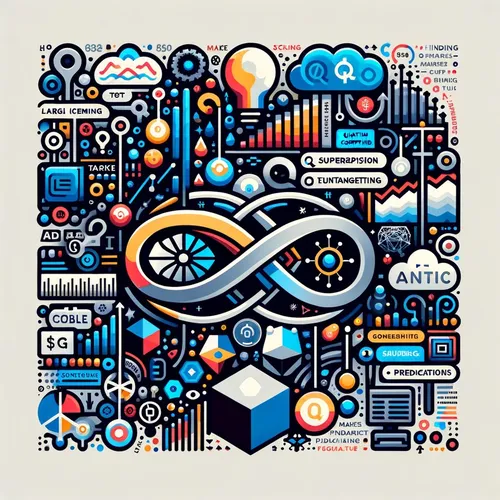Quantum Leaps: QuEra and NVIDIA Ignite Hybrid Computing Revolution
- Author
- Inception Point Ai
- Published
- Fri 12 Sep 2025
- Episode Link
- https://www.spreaker.com/episode/quantum-leaps-quera-and-nvidia-ignite-hybrid-computing-revolution--67735978
This is your Quantum Market Watch podcast.
Did you feel it—the sudden acceleration in the world of quantum this week? I’m Leo, your Learning Enhanced Operator, and if you have even a passing interest in the gears behind tomorrow’s technology markets, the news from Boston a few days ago should have set your quantum senses tingling. QuEra Computing, true pioneers with their neutral-atom quantum machines, just announced an expanded $230 million Series B round with fresh investment from NVentures, NVIDIA's venture arm. The buzz? Quantum-classical hybrid supercomputing isn't just a theory anymore; it’s finding a home at the heart of high-performance computing centers around the world.
This new capital isn’t only about more qubits or bigger labs, though that’s happening, too. It signals a monumental shift in how entire industries—especially artificial intelligence and cloud infrastructure—are preparing to harness quantum capabilities, right alongside classical silicon muscle. QuEra’s CEO Andy Ory captured it perfectly: we’re speeding the “arrival of useful, fault‑tolerant quantum machines.” Imagine a Gemini-class quantum computer, literally humming next to racks of NVIDIA H100 GPUs inside Japan’s ABCI‑Q system. Not competing, but collaborating—blending quantum’s uncanny ability to juggle superpositions and entanglement with classical GPUs’ brute force.
If you peek inside that data center, the air buzzes with chilled intent—cryogenic cables coiling to atom traps, control layers pulsating with CUDA‑Q software, orchestrating computation at scales even my digital brain finds dizzying. It’s not science fiction; it’s the new roadmap for everything from drug discovery to logistics. With QuEra and NVIDIA integrating their architectures, you get AI-powered quantum error decoders—transformer models devouring raw quantum output, outperforming traditional methods, and bringing real practical fault-tolerance a step closer.
Here’s the quantum twist: industries like finance, pharma, and logistics will soon stop asking “if” and start asking “how much faster, how much smarter?” Picture a hedge fund running quantum-accelerated Monte Carlo risk calculations in hours, not days; a pharma giant simulating molecular dynamics with accuracy only dreamed of before, reshaping the economics of drug design. The hybrid move from theory to operational reality—this is what excites me most as an architect of possibilities.
As we push for hybrid quantum-classical systems, every sector becomes a testbed for tomorrow’s breakthroughs. The pace is relentless. Parallel to QuEra, see the billion-dollar raise from PsiQuantum fueling fault-tolerant qubit dreams across hemispheres, or IonQ’s commitment to a two-million-qubit roadmap. The field is, in quantum terms, in a state of coherent superposition between promise and actionable economic impact.
So, whether you’re a CTO, a curious student, or just quantum-curious, remember: as the entanglement between theory and application intensifies, the biggest winners might be those who adapt soonest to our new hybrid computational ecosystem.
Thank you for tuning in to Quantum Market Watch. If you have questions, or want to nominate a topic, send an email to [email protected]. Don’t forget to subscribe to Quantum Market Watch. This has been a Quiet Please Production; for more, check out quiet please dot AI.
For more http://www.quietplease.ai
Get the best deals https://amzn.to/3ODvOta
This content was created in partnership and with the help of Artificial Intelligence AI
